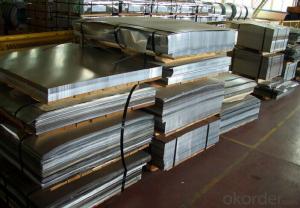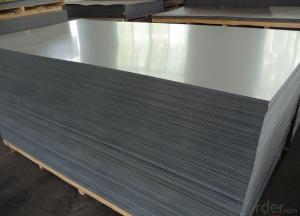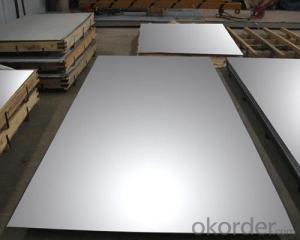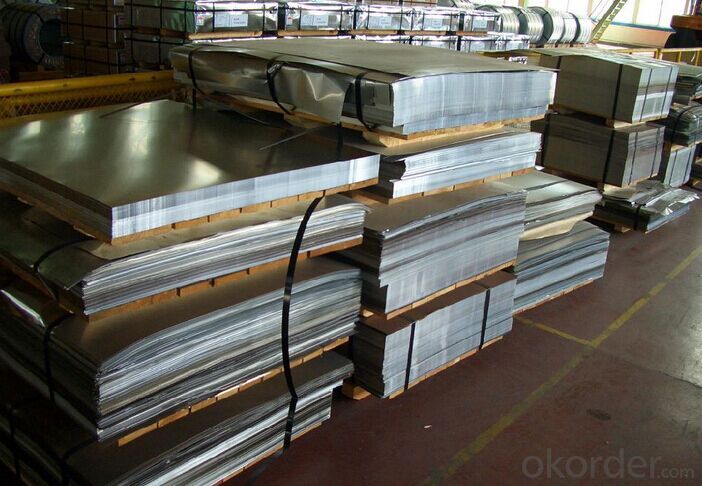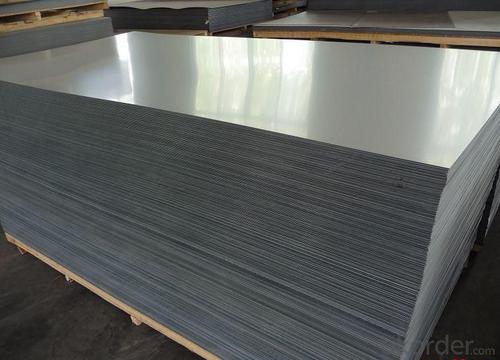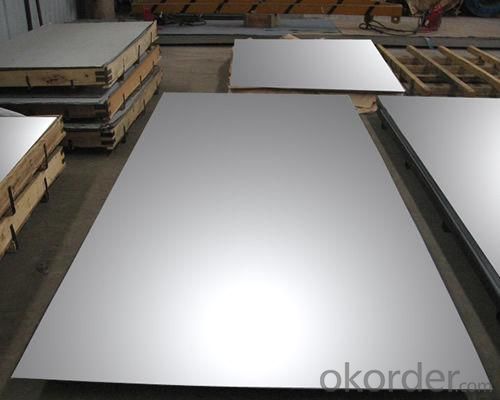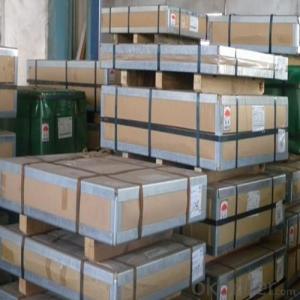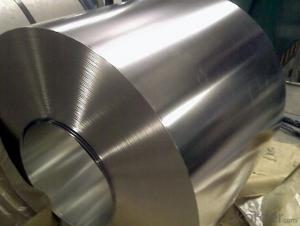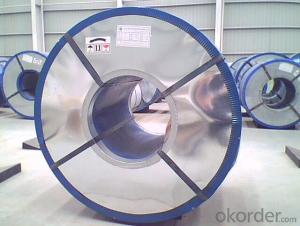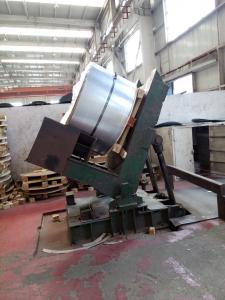Electrolytic Tinplate Sheets for Tin Can making
- Loading Port:
- Tianjin
- Payment Terms:
- TT OR LC
- Min Order Qty:
- 25 m.t
- Supply Capability:
- 7000 m.t/month
OKorder Service Pledge
OKorder Financial Service
You Might Also Like
1.Structure of Electrolytic Tinplate Sheets for Tin Can making Description
Electrolytic Tin Plate Coils and Sheets for Foods Metal Packaging, is one thin steel sheet with a coating of tin applied by electrolytic deposition. Tinplate made by this process is essentially a sandwich in which the central core is strip steel. This core is cleaned in a pickling solution and then fed through tanks containing electrolyte, where tin is deposited on both sides. As the strip passes between high-frequency electric induction coils, it is heated so that the tin coating melts and flows to form a lustrous coat.
2.Main Features of the Electrolytic Tinplate Sheets for Tin Can making
Appearance – Electrolytic Tin Plate is characterized by its beautiful metallic luster. Products with various kinds of surface roughness are produced by selecting the surface finish of the substrate steel sheet.
Paintability and printability – Electrolytic Tin Plates have excellent paintability and printability. Printing is beautifully finished using various lacquers and inks.
Formability and strength – Electrolytic Tin Plates have got very good formability and strength. By selecting a proper temper grade, appropriate formability is obtained for different applications as well as the required strength after forming.
Corrosion resistance – Tinplate has got good corrosion resistance. By selecting a proper coating weight, appropriate corrosion resistance is obtained against container contents. Coated items should meet 24 hour 5 % salt spray requirement.
Solderability and weldability – Electrolytic Tin Plates can be joined both by soldering or welding. These properties of tinplate are used for making various types of cans.
Hygienic – Tin coating provides good and non toxic barrier properties to protect food products from impurities, bacteria, moisture, light and odours.
Safe – Tinplate being low weight and high strength makes food cans easy to ship and transport.
Eco friendly – Tinplate offers 100 % recyclability.
Tin is not good for low temperature applications since it changes structure and loses adhesion when exposed to temperatures below – 40 deg C.
3.Electrolytic Tinplate Sheets for Tin Can making Images
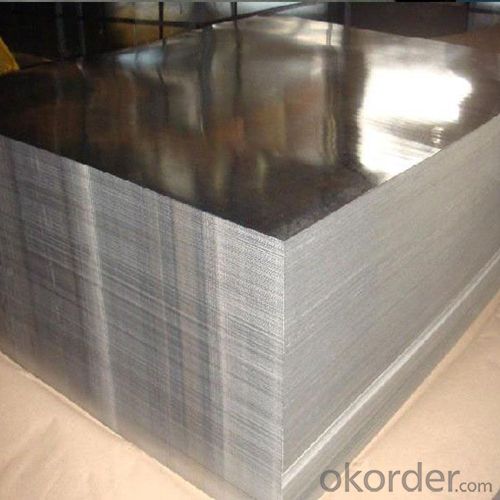
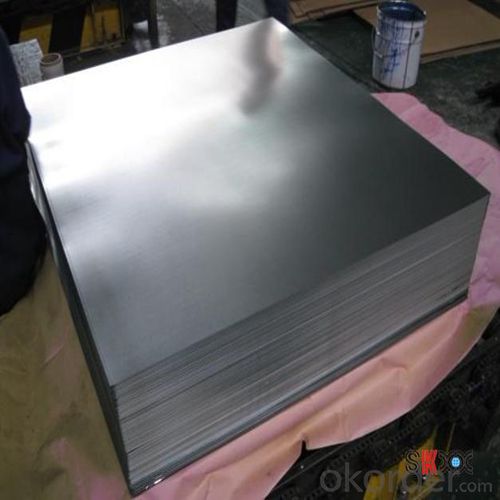
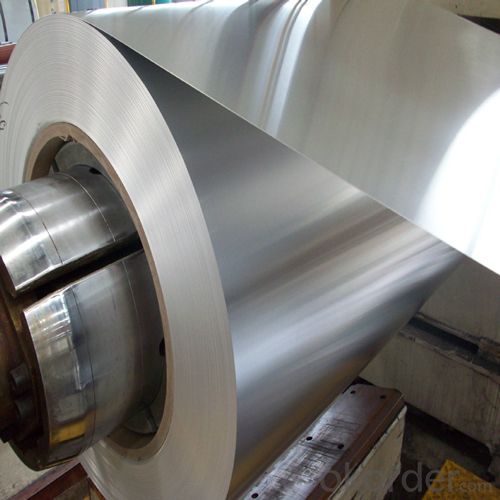
4.Electrolytic Tinplate Sheets for Tin Can making Specification
Standard | ISO 11949 -1995, GB/T2520-2000,JIS G3303,ASTM A623, BS EN 10202
|
Material | MR,SPCC |
Thickness | 0.15mm - 0.50mm |
Width | 600mm -1150mm |
Temper | T1-T5 |
Annealing | BA & CA |
Coil Inner Diameter | 508mm |
Weight | 6-10 tons/coil 1~1.7 tons/sheets bundle |
Passivation | 311 |
Oil | DOS |
Surface | Finish,bright,stone,matte,silver |
5.FAQ of Electrolytic Tinplate Sheets for Tin Can making
-What your tinplate material is used for ?
Tinplate is widely used for the packaging of products. Such as food cans,
beverage cans, pet cans, closures, general line cans and so on.
Printed Tinplate is offered!!
-How to place .an order or contact you ?
Please send us Email. we will give you a quick response in seconds .
- How is your quality ?
All our quality is prime even the secondary quality . We have many years experience
In this field with serious quality control standard . Advanced equipment, We welcome your visit to our factory .
- Q: What are the challenges faced in the recycling of tinplate?
- One of the main challenges in the recycling of tinplate is the separation of tin from the steel base. Tinplate consists of a thin layer of tin coated on steel, and separating these materials requires specialized equipment and processes. Additionally, the presence of other contaminants, such as paint or coatings, can further complicate the recycling process. Proper sorting and cleaning of tinplate waste is necessary to ensure efficient recycling and minimize the loss of valuable materials.
- Q: Can tinplate packaging be used for personal care products?
- Yes, tinplate packaging can be used for personal care products. Tinplate is a durable and lightweight material that provides good protection against moisture, light, and air. It is commonly used for packaging cosmetics, skincare products, and other personal care items. Additionally, tinplate packaging offers a premium and aesthetic appeal, making it suitable for various personal care product ranges.
- Q: What are the main safety regulations for tinplate production and use?
- The main safety regulations for tinplate production and use include ensuring proper ventilation and exhaust systems to prevent exposure to harmful fumes, implementing effective fire prevention and control measures, providing personal protective equipment for workers such as gloves and goggles, conducting regular maintenance and inspection of equipment to prevent accidents, and adhering to strict quality control standards to ensure the safety of the final product. Additionally, proper training and education about safety protocols should be provided to all employees to minimize risks and ensure a safe working environment.
- Q: What are the advancements in tinplate technology?
- Some of the advancements in tinplate technology include improved coatings for enhanced corrosion resistance, the development of thinner and lighter tinplate materials, and the introduction of advanced printing techniques for more vibrant and detailed designs. Additionally, there have been advancements in tinplate manufacturing processes, such as continuous annealing and tin-free steel alternatives, which have improved production efficiency and reduced environmental impact.
- Q: What is the tensile strength of tinplate?
- The tensile strength of tinplate typically ranges from 30,000 to 50,000 pounds per square inch (psi).
- Q: Soup with tin cans loaded also need high temperature sterilization?
- Recently, the new provisions of the food industry has been introduced, did not look carefully, it seems that there is no preservative food should be high temperature sterilization.From the point of view of food safety, sterilization is also beneficial. You know that.
- Q: Why tinned fruit cans, some snow wall, and some inner wall does not appear?
- Tin cans inside must use the high Xiliang (11.2 - 15.1), the inner wall of the conventional oxidation after a snowflake, which belongs to the benign chemical reaction, enhance the taste.
- Q: What are the different methods of disposing of tinplate packaging?
- There are several methods for disposing of tinplate packaging. The most common method is recycling, where the tinplate is collected and processed to be used in the manufacturing of new products. Another option is repurposing, where the packaging is creatively transformed into new items or used for storage purposes. Additionally, tinplate packaging can be disposed of in landfills, although this is the least environmentally friendly option. It is important to check local regulations and recycling programs to ensure proper disposal of tinplate packaging.
- Q: How does tinplate affect the overall cost of packaging?
- Tinplate can significantly impact the overall cost of packaging due to its durability and versatility. While tinplate itself may be more expensive compared to other materials, it offers excellent barrier properties, which can extend the shelf life of products, reduce the risk of spoilage, and minimize the need for additional packaging layers. Additionally, tinplate's strength allows for efficient stacking and transportation, reducing the risk of damage during transit. Despite its higher initial cost, tinplate can ultimately help lower overall packaging costs by minimizing product loss, ensuring product quality, and optimizing logistical operations.
- Q: What are the main challenges in the production of tinplate?
- The main challenges in the production of tinplate include ensuring consistent quality and thickness of the tin coating, preventing corrosion and rusting of the base metal, maintaining a smooth and defect-free surface, managing the tinplate's strength and ductility properties, and minimizing the environmental impact of the tin coating process. Additionally, sourcing sustainable and ethically-mined tin can be a challenge in some cases.
Send your message to us
Electrolytic Tinplate Sheets for Tin Can making
- Loading Port:
- Tianjin
- Payment Terms:
- TT OR LC
- Min Order Qty:
- 25 m.t
- Supply Capability:
- 7000 m.t/month
OKorder Service Pledge
OKorder Financial Service
Similar products
Hot products
Hot Searches
Related keywords
